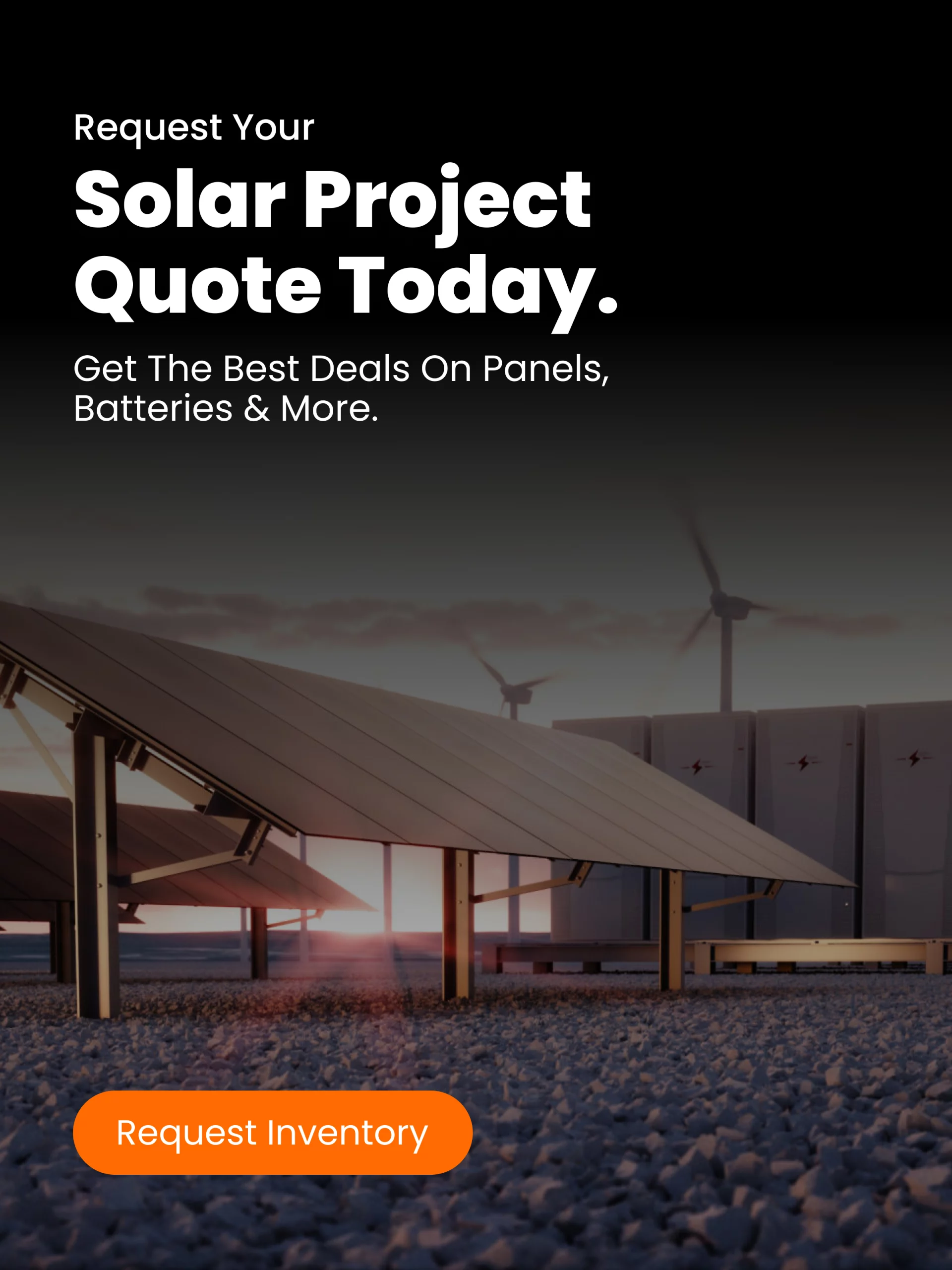Silicon Valley Bank (SVB) has been the preferred bank for the climate tech sector for the last ten years. In 48 hours, it was no more.
So what happened?
The simple answer is that they grew too fast and made the wrong financial decisions.
But there’s always more to the story; with a closer look at that, we can get a better handle on what may be coming in the future.
Why did SVB collapse?
SVB is a 40-year-old bank, but this story started about ten years ago when SVB positioned itself as a niche bank for tech startups.
SVB recognized the potential of the growing climate tech industry and leaned into it heavily. At the beginning of 2022, they committed to investing $5 billion dollars in climate tech projects by 2027. This amount is significant compared to most banks which typically allocate hundreds of millions to such products. SVB boasted over 1,500 climate tech customers in the solar industry alone and participated in over 60% of all community solar projects.
By the time it failed, the bank had become the pet spot for climate tech founders to keep their funds.
However, the bank made a series of mistakes that compounded upon themselves, beginning during the inflation surge that started in mid-2021.
1. SVB invested in slow-growing, low-liquidity treasury bonds. While the federal government’s high credit quality makes these bonds a low-risk investment, the rising interest rates that came along with inflation crushed the value of those bonds.
2. SVB could have covered this mistake by diversifying its portfolio and hedging with derivatives transactions but failed to do so for reasons as yet undetermined.
3. At the same time the inflation surge began, deposits slowed. Higher raw material costs and supply chain costs slowed climate tech projects over that stretch, and the cost of silicon see-sawed as well.
While the passing of the Inflation Reduction Act promised future growth in climate tech sectors, grid inefficiencies and local disputes have slowed projects down to a crawl. Many have been delayed up to four years, leading companies to pull out. Q4 of 2022 saw a 16% decline in clean energy installations.
4. Crypto-friendly lender Silvergate Capital (SI) failed after its depositors went on a bank run. Sam Bankman-Fried’s scandal-plagued FTX was one of its biggest customers, and its fall led to a bank run by depositors anxious about SI’s ability to return their funds. SI did not directly cause SVB to fall, but there’s quite a bit of community overlap between the two banks, and bank runs are a social contagion. When SVB’s customers saw their peers bank going under, they felt justified in making a bank run of their own.
5. Poor regulation due to the 2018 rollback of Dodd-Frank may also have been an issue. The bank nearly doubled from $115 billion to $212 billion between 2020 and 2022. FDIC insurance policy did not cover up to 96% of their deposits, and leaving that amount of uninsured money twisting in the wind left them wide open for a bank run. All these red flags left unchecked suggest regulators weren’t paying close enough attention to their banking strategies.
What’s next?
A regional bank failing is a cause for concern because when one sector fails, others do.
What is the government doing to help?
The White House made a statement over the weekend, and Joe Biden spoke to the nation on Monday, March 13th.
President Joe Biden and US Secretary of Treasury Janet Yellen took lengths to explain how their plan would differ from the 2008 Bank Bailout.
In short, this is a depositor bailout, not a bank bailout.
Biden said, “No losses will be — and this is an important point — no losses will be borne by the taxpayers. Let me repeat that, no losses will be borne by the taxpayers. Instead, the money will come from the fees that banks pay into the Deposit Insurance Fund.”
White House Treasury Secretary Janet Yellen stated, “In the aftermath of the 2008 financial crisis, new controls were put in place, better capital and liquidity supervision, and it was tested during the early days of the pandemic and proved its resilience. So Americans can have confidence in the safety and soundness of our banking system.”
Biden addressed SVB customers, “Your deposits will be there when you need them. Small businesses across the country that deposit accounts at these banks can breathe easier knowing they’re able to pay their workers and pay their bills.”
SVB customers will have full access to their deposits, even if their total accounts are above the maximum $250,000 covered by federal insurance. This will be a huge relief to depositors not part of the bank run.
How will this affect the relationship between climate tech and banking?
Let’s start by asking the question on everyone’s minds:
Will there be more bank runs?
(We’ll start by saying we aren’t giving financial advice here, just sharing some insight.)
More bank runs would devastate the economy and limit funding options within the solar industry.
Yellen said, “We want to make sure that the troubles that exist at one bank don’t create contagion to others that are sound,” she said. “The goal always of supervision and regulation is to make sure that contagion can’t occur.”
Bank runs happen fast, resulting from pessimism that quickly turns into fear.
Again, we aren’t qualified to give financial advice, but we can tell you what we think about the future.
Future of lending
Social media influencers cite a handful of regional banks cratering in value this morning as evidence of the social contagion Yellen was concerned about.
We’re doubtful about their theories.
As we write this up on Monday, March 13th, a small handful of regional bank prices had dropped significantly. First Republic Bank (FRC) is down over 40%, and PacWest (PACW) is down over 20%. Most other banks have experienced minor drops, and others are competing to purchase SVB.
Future of lending in the solar industry
We’re optimistic about our industry, and we believe other healthy financial institutions will gladly fill in for SVB and lend to customers that fit their profile. Many lending institutions are making those calls to SVB customers or those who would have fit that profile.
The reality is that SVB was a niche lender that made some lending mistakes their depositors could not have been aware of and are not responsible for. Climate tech is a great place to be, and while this is a shaky moment, we’re relieved that the government is backing up these funds.
If enough people feel this way about their industries and banks are as healthy as Yellen claims, additional runs are unlikely.
What are the future policy implications?
It does appear that policy changes are on the horizon. Biden said he is “firmly committed to holding those responsible for this mess fully accountable and to continuing our efforts to strengthen oversight and regulation of larger banks so that we are not in this position again.”
Biden added that he would ask Congress and banking regulators to “strengthen the rules for banks to make it less likely this kind of bank failure would happen again.”
We should expect something similar to Dodd-Frank, which would mean tighter regulation on the growth of not just niche banks but all banks. Less money over the $250,000 threshold would also be on the horizon.
By the numbers
- SVB was a 40-year-old bank
- It was the 16th largest bank in the US.
- It had $212 billion in assets
- This is the 2nd largest bank failure in US history, behind only Washington Mutual
- SVB had 1,550 customers in the climate tech industry
- The government will insure assets over $250,000 using FDIC premiums
- Up to 96% of SVB’s $175 billion in deposits were uninsured as of the end of 2022,
The Bright idea
It’s always concerning to see a bank fail. Considering this was the 16th largest bank in the US and the largest in climate technology, it casts a pall over an industry that has been making massive strides worldwide.
Solar has experienced an annual growth rate of 33% over the last decade. This is partly due to solar panel costs dropping by over 40%, increased demand for clean electricity, and excellent federal and state incentives. It’s also been a boon to the jobs market, employing over 255,000 Americans in 2021.
We still face significant challenges in our industry. While the Inflation Reduction Act was a massive boon to the solar industry, commercial and utility-scale installations face bottlenecks due to grid inefficiencies and supply chain constraints and often see companies dropping out altogether. We must find ways to speed up solar deployment in the commercial and utility-scale markets. Combined with this new financial instability, these factors could temporarily slow economic and job growth moving forward.
Despite our current challenges, solar accounted for 45% of all new electric generating capacity additions through Q3 2022, the highest of all electricity sources.
Solar has historically been a resilient industry, and we expect to see that growth after we get through this financial mess.
It must because America demands it



